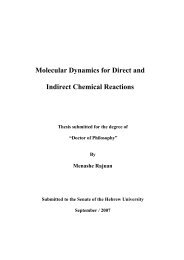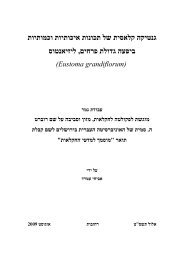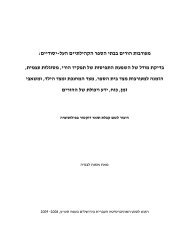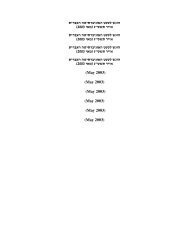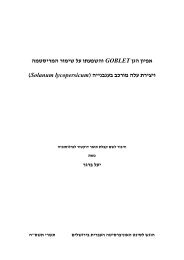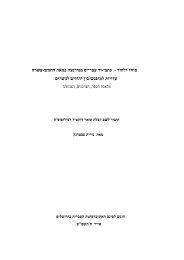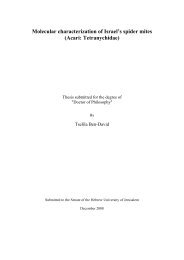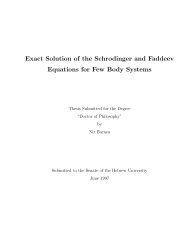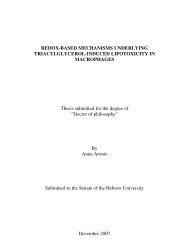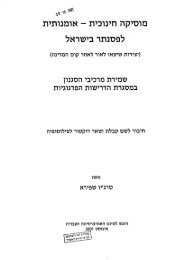Revealing the Mechanism of HSP104 Transcription Initiation in the ...
Revealing the Mechanism of HSP104 Transcription Initiation in the ...
Revealing the Mechanism of HSP104 Transcription Initiation in the ...
You also want an ePaper? Increase the reach of your titles
YUMPU automatically turns print PDFs into web optimized ePapers that Google loves.
Table 7. Comparison between HSE-LacZ and SV40-LacZ <strong>in</strong> various mutant stra<strong>in</strong>s.<br />
Stra<strong>in</strong>s C<strong>of</strong>actor complex<br />
β-Gal activity (% <strong>of</strong> WT) β-Gal activity (% <strong>of</strong> WT)<br />
Un<strong>in</strong>duced Induced<br />
Un<strong>in</strong>duced Induced<br />
HSE-LacZ HSE-LacZ SV40-LacZ SV40-LacZ<br />
ada2∆ ADA,SAGA 32 89 125 149<br />
ada3∆ ADA,SAGA 0.5 0.4 111 111<br />
gcn5∆ ADA,SAGA 25 40 137 126<br />
spt3∆ SAGA 32 57 350 194<br />
spt7∆ SAGA 6 10 169 92<br />
spt8∆ SAGA 32 54 313 168<br />
sas3∆ NuA3 8 6 10 9<br />
hpa3∆ HAT 40 45 101 103<br />
hos2∆ HDAC 35 28 67 72<br />
hos3∆ HDAC 40 43 132 101<br />
sir2∆ HDAC 43 47 165 102<br />
hst2∆ HDAC 64 50 102 90<br />
To beg<strong>in</strong> and address <strong>the</strong> mechanism <strong>of</strong> action <strong>of</strong> <strong>the</strong> mutations responsible for<br />
reduced Hsf1 activity, we tested <strong>in</strong> some <strong>of</strong> <strong>the</strong> stra<strong>in</strong>s <strong>the</strong> ability <strong>of</strong> Hsf1 to b<strong>in</strong>d <strong>in</strong><br />
vivo to <strong>the</strong> <strong>HSP104</strong> promoter. S<strong>in</strong>ce we showed that Hsf1 constitutively b<strong>in</strong>ds HSEs<br />
on <strong>the</strong> <strong>HSP104</strong> promoter regardless <strong>of</strong> heat shock conditions, we predicted reduced<br />
DNA b<strong>in</strong>d<strong>in</strong>g activity <strong>of</strong> Hsf1 <strong>in</strong> stra<strong>in</strong>s <strong>in</strong> which HSE-LacZ activity was low. Quite<br />
surpris<strong>in</strong>gly, we actually observed an <strong>in</strong>verse correlation between <strong>the</strong> transcriptional<br />
activity <strong>of</strong> Hsf1 and its DNA b<strong>in</strong>d<strong>in</strong>g activity. As is shown <strong>in</strong> Figure 17, gcn5∆,<br />
spt7∆, caf1∆, and ccr4∆ cells which demonstrated very poor reporter activity <strong>of</strong> HSE-<br />
LacZ (Table 6), displayed stronger b<strong>in</strong>d<strong>in</strong>g <strong>of</strong> Hsf1 on <strong>the</strong> <strong>HSP104</strong> promoter<br />
compared to wild type. Perhaps <strong>in</strong> <strong>the</strong>se stra<strong>in</strong>s stronger Hsf1 DNA b<strong>in</strong>d<strong>in</strong>g activity<br />
is <strong>in</strong>hibitory. <strong>Transcription</strong> repression activity <strong>of</strong> Hsf1 was previously suggested<br />
(131). It should be noted that <strong>the</strong> studies on <strong>the</strong> mechanism <strong>of</strong> action <strong>of</strong> <strong>the</strong> mutants is<br />
only at its beg<strong>in</strong>n<strong>in</strong>g and a large scale study is required for reveal<strong>in</strong>g <strong>the</strong> role <strong>of</strong> each<br />
factor on Hsf1 activity. Never<strong>the</strong>less, <strong>the</strong> f<strong>in</strong>d<strong>in</strong>g <strong>of</strong> elements <strong>of</strong> <strong>the</strong> basal<br />
transcription mach<strong>in</strong>ery that are highly specific to Hsf1 is novel and unexpected.<br />
46



